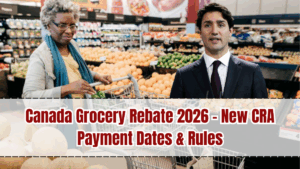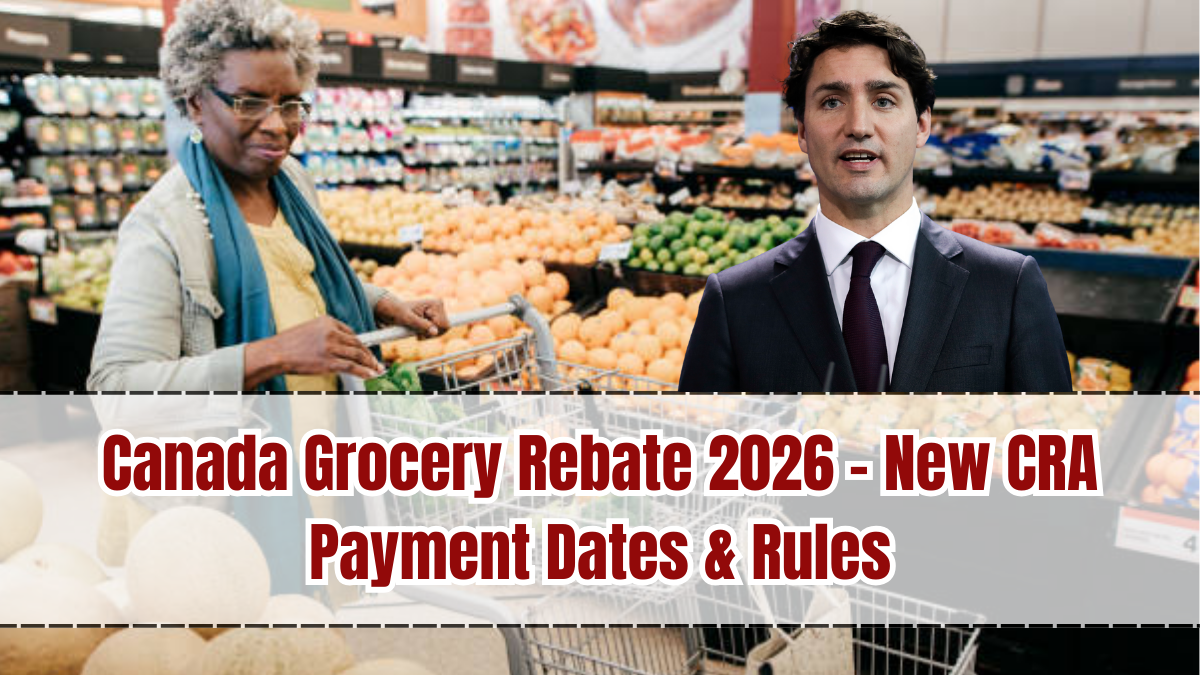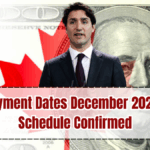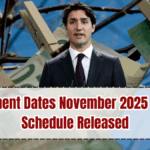The Canada Revenue Agency (CRA) has confirmed that the Grocery Rebate program will continue into 2026, following the successful rollouts in 2023, 2024, and 2025. With food inflation still weighing heavily on Canadian households, the government has announced that new grocery rebate payments will be distributed in 2026 to eligible individuals and families. This benefit, designed to provide direct financial support, helps offset the high cost of groceries, particularly for low- and modest-income Canadians.

Why the Grocery Rebate is Important in 2026
Over the past few years, Canadians have faced sharp increases in food prices, partly due to global supply chain disruptions, rising fuel costs, and inflationary pressures. Even as the economy stabilizes, food remains one of the most expensive household categories. The 2026 grocery rebate is significant because it:
-
Provides extra cash relief to millions of households.
-
Targets Canadians who are most vulnerable to food insecurity.
-
Helps balance rising expenses during the first half of 2026.
-
Demonstrates the government’s commitment to making daily essentials more affordable.
For families, seniors, and students with limited income, this payment represents a crucial financial cushion.
Grocery Rebate Amounts in 2026
While the exact payment amounts will depend on family size and income level, CRA is expected to follow the same structure used in 2025. Based on preliminary announcements, here are the estimated rebate amounts for 2026:
| Household Type | Estimated Maximum Rebate 2026 |
|---|---|
| Single individual | $234 |
| Married or common-law couple (no children) | $306 |
| Single parent with one child | $387 |
| Family of four (couple + 2 children) | $628 |
These amounts mirror the October 2025 payment, but CRA may introduce adjustments in 2026 depending on updated income thresholds and inflation figures. The government has not yet confirmed if there will be an increase in the maximum rebate to reflect higher grocery costs, but discussions are ongoing.
Eligibility Rules for 2026
Eligibility for the 2026 grocery rebate will continue to be based on the same system as the GST/HST credit program. Canadians must:
-
Have filed their 2025 income tax return.
-
Meet the CRA’s low- and modest-income thresholds.
-
Be a resident of Canada for income tax purposes.
-
Fall into an eligible family type (single, couple, single parent, family with children).
Seniors, students, and families with children are among those most likely to qualify. Filing taxes on time is the most important step to ensure you are automatically considered.
Payment Dates for 2026
The CRA is expected to distribute the first grocery rebate of 2026 in April, aligning it with GST/HST credit payments. Additional installments may be rolled out later in the year, though the government has not yet confirmed whether rebates will be annual or semi-annual in 2026.
Tentative timeline (based on CRA’s payment cycles):
| Payment Cycle | Tentative Date |
|---|---|
| First Grocery Rebate 2026 | April 10, 2026 |
| Second Grocery Rebate 2026 (if announced) | July 2026 |
| Third Grocery Rebate 2026 (if announced) | October 2026 |
These dates may shift slightly, but recipients will be informed through CRA’s official channels and My Account portal.
How Payments Will Be Delivered
-
Direct Deposit: Fastest and most reliable method; funds will be credited directly into beneficiaries’ bank accounts.
-
Cheque: Available for Canadians not enrolled in direct deposit, but delays may occur due to Canada Post delivery times.
-
CRA My Account Notifications: Beneficiaries can log in to confirm eligibility, payment amount, and status.
To avoid delays, Canadians are strongly encouraged to set up direct deposit with CRA or their financial institution before April 2026.
Why Filing Taxes is Crucial
Even if you earned no income in 2025, filing a tax return is mandatory to be considered for the rebate. CRA uses tax return information to:
-
Assess family income levels.
-
Verify dependent children or marital status.
-
Determine the exact rebate amount for each household.
Failure to file taxes means missing out on this important benefit, even if you are otherwise eligible.
How the Rebate Supports Canadians
The 2026 grocery rebate is not just a cash transfer—it plays a larger role in supporting household stability and reducing food insecurity. For example:
-
Seniors living on CPP and OAS can use it for essential groceries.
-
Students in rental housing can stretch their food budgets.
-
Families with children can offset back-to-school or seasonal food expenses.
-
Individuals in rural communities, where groceries are often more expensive, can benefit from the extra cash boost.
By ensuring that funds go directly to households, the rebate also boosts local economies, particularly in smaller communities where recipients shop locally.
Tips for Managing Your Grocery Rebate Wisely
To maximize the benefit of the 2026 rebate:
-
Prioritize essentials like fruits, vegetables, proteins, and household basics.
-
Use rebates strategically for bulk purchases to save money long-term.
-
Allocate part of the rebate for utilities or transportation costs, if grocery needs are already covered.
-
Consider saving a portion in case of unexpected expenses later in 2026.
FAQs
How much is the 2026 grocery rebate?
The maximum payment is expected to be $628 for a family of four, though amounts vary depending on family size and income.
Who is eligible for the 2026 rebate?
Eligibility is based on the 2025 tax return and CRA’s low-income thresholds. Filing taxes on time is essential.
When will the rebate be paid?
The first payment is expected in April 2026, with possible additional cycles in July and October if announced.
Do I need to apply for the rebate?
No. CRA will automatically determine eligibility based on your tax filing.
How will I receive the payment?
Most Canadians will receive the rebate through direct deposit. Cheques will be mailed to those not enrolled.
Click here to know more.




